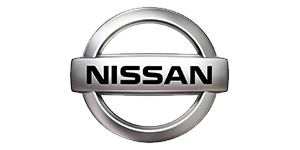Need Pricing quickly?
No problem, we have a Live team on hand to assist you. Click Start Now & enter your query.
![]()
No problem, we have a Live team on hand to assist you. Click Start Now & enter your query.
![]()
In Nissan’s view, the global automotive industry is now engaged in “one of the greatest engineering competitions in history.” Carlos Ghosn, Nissan’s CEO and president, writes on the company’s website, “In pursuit of environmentally sustainable mobility, we are now engaged in a great race…[that] will change almost every facet of the car in the years ahead and…distinguish the winners from the rest.”
To ensure that Nissan is one of the winners, the company is now building on the success of a program Ghosn initiated in 2001. Called V-3P (Value Up for Product, Process and Program Innovation), this comprehensive plan positions the company well for the challenges facing the auto industry. In addition to the mandate for more environmentally friendly vehicles, the challenges include on-going time-tomarket pressures, global markets, and global supply chains.
The foundation of the V-3P program is product lifecycle management technology from Siemens PLM Software, specifically I-deas™ and NX™ digital product development software and Teamcenter® digital lifecycle management software. “Siemens PLM software is the main solution for our V-3P innovation process,” says Keigo Fukushi, general manager and V-3P program director at Nissan. “I-deas and NX form the core design system, and Teamcenter manages all the data.”
The V-3P program as Ghosn originally conceived it had two goals: to get new vehicles to the market faster and to increase product quality. Siemens software plays key roles in both areas. NX and I-deas, for example, form the basis for what the company calls “Know-How CAD,” a system of knowledge capture and re-use which includes the entire team, from design engineers to suppliers.
“There are two aspects of Know-How CAD, process knowledge and product knowledge,” explains Fukushi. “With Know-How CAD, younger engineers have access to historical data and ideas; knowledge is accessed and leveraged. And thus processes are streamlined and timelines are shortened. Know-How CAD enables a team to be more efficient and more innovative, and allows younger engineers to achieve the same results as more experienced engineers.”
In addition, digital data created in I-deas and NX forms the basis for virtual validation, which is a key way Nissan is shortening the development cycle. “Virtual validation helps us find problems very early in the design process,” Fukushi says. “If you don’t find those problems until you make a physical prototype, it’s too late in the process and very expensive, plus it may cause changes to many other pieces of the vehicle. A virtual test can happen very early and it allows us to implement counter-measures before other parts of the vehicle are fixed. Finding issues earlier also gives you more time to work through design alternatives to find the best overall solution or counter-measure.”
These practices would not be possible without Teamcenter, which establishes a single source of accurate and up-to-date vehicle information. The Teamcenter vault contains: CAD data created with both NX and I-deas, digital validation models and results, CAM files, bills of material, and process planning data. Teamcenter allows the company to make this information available throughout the organization, even to those who don’t use the technical applications.
The V-3P program has been hugely successful. When the program began, Nissan needed 20 months to bring a new vehicle design from styling freeze to the start of production (SOP). The four vehicles that have so far been developed in the V-3P program have gone from styling freeze to SOP in only 10.5 months.
Quality has improved significantly as well under the V-3P program. This was determined in two ways. One was a reduction in design changes, which ranged from a 60-percent to a 90-percent decline. The lower figure was achieved on a vehicle program that included a significant amount of new technology. The 90-percent reduction was found on a follow-up vehicle program based on an existing platform. The other way that quality was measured was in the number of problems reported after a vehicle was released to the market. By this measure, the V-3P program excelled, reducing this number by 80 percent.
Nissan also reports that the V-3P program exceeded the return on investment the company originally expected. In the midst of a great engineering competition that will dramatically reshape its product line, Nissan has established a vehicle development process that both preserves its reputation for quality and allows it to get competitive technologies to market faster. The V-3P program, based on Siemens PLM technology, is the foundation for future success.
